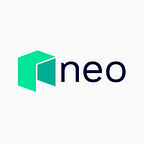Decentralized Money Markets: Transforming Finance with Web3 Technologies
Conventional money markets aren’t the only way to borrow and lend assets anymore. In recent years, growth and acceptance of Decentralized Finance (DeFi) has made it possible for people to borrow and lend their crypto assets with just a few clicks.
This article explores the features and benefits of the decentralized money market in the DeFi world and discusses a new decentralized money market within the Neo ecosystem.
What is a decentralized money market?
A decentralized money market is a market structure that uses smart contracts and other blockchain-powered Web3 technologies. This market structure allows investors, lenders, and borrowers to establish a non-centralized market structure, free of any physical market structure. All of these personas can trade freely under this decentralized market arrangement.
For centuries, traditional money markets have provided a net positive for the global economy, enabling business to expand and allowing citizens to save their money. But these dynamics have gradually shifted to offer less advantage to citizens, while presenting more challenges: Typically, centralized institutions operate today’s traditional money markets. This centralized approach grants a significant amount of power and influence over user funds to a single entity–increasing borrower and lender costs, and requiring a high degree of trust in a single party.
In response to these limitations, developers started using blockchain-based smart contracts to create decentralized money markets for investors, lenders, and borrowers. Instead of being operated by a centralized institution, decentralized money markets operate through on-chain programmatic code that is upgraded and managed by a global community of stakeholders.
Benefits of the decentralized money market
Decentralized money markets, already ascending in the DeFi world, have seen even more interest following the recent public collapse of centralized exchanges (CEXs) such as FTX. The decentralized money market approach benefits consumers by ending the monopoly of a single entity in control and reducing possible points of failure.
A few key benefits of the decentralized money market for consumers include the following:
- Non-custodial: Operates in a non-custodial manner. Only the original user can withdraw deposited funds from borrowers and lenders. No centralized institution is in play in this model to decide where and how funds are used: Instead, decentralized money markets follow predefined logic within on-chain smart contracts, granting significant assurance that funds cannot be improperly used, and keeping full control over when and how funds can be withdrawn in the hands of the owners of the funds.
- Permissionless: Leverages these smart contracts on chain to operate in an inherently permissionless manner. Users don’t have to ask permission from a central gatekeeper: Within minimal friction, anyone with internet access can earn yield and/or borrow working capital. This censorship resistance creates a wider market of users, including the underbanked, and generates more economic activity and higher yields as a result.
- Overcollateralized: Operates in an overcollateralized manner. The traditional financial system commonly operates in an undercollateralized and fractional reserve manner that lets users borrow more funds than they deposit as collateral. In contrast, in a decentralized money market, users deposit more collateral than what is being borrowed. This means that if borrowers don’t pay back their debts, their collateral is simply liquidated, providing a higher degree of security for lenders.
- Open composability: Enables different applications and protocols to interact with each other. Smart-contract-powered financial applications such as decentralized money markets have a unique advantage: They allow tokenization of deposited funds. For example, tokens deposited on the DeFi protocol Aave become fungible aTokens. These tokenized deposits become interest-bearing representations of the underlying assets and can be used in other applications in the decentralized finance ecosystem. This creates composability, allowing for creation of more advanced applications such as no-loss lotteries. For example, PoolTogether is a no-loss lottery where user funds are pooled in a money market to generate interest. The interest is then distributed to one winner a week, while all users can withdraw their full original deposit at any time.
Combined, these numerous advantages have made decentralized money markets one of the most widely used applications in the DeFi economy, alongside decentralized exchanges and stablecoins.
The DeFi market on Neo
Beyond on-chain smart contract logic, in order to function properly, decentralized money markets need another critical piece of core infrastructure: A decentralized trading platform.
Demex is a decentralized trading platform that fills this role within the Neo ecosystem and numerous other blockchain ecosystems. Demex’s pedigree is in fact intertwined with the Neo ecosystem: Switcheo Labs, winner of the first hackathon of COZ (a longtime developer community in the Neo ecosystem) developed Demex, launching this decentralized exchange (DEX) platform in 2020.
Demex is a fully non-custodial exchange that supports advanced crypto derivatives. Demex is built on the Carbon blockchain, a standalone, scalable layer-2 DeFi protocol specifically designed for trading advanced trading derivatives such as futures, perpetuals, and more. Demex functions as a multi-chain order book DEX and, as of recently, a money market.
In November of 2022, Demex launched Nitron by Demex, a permissionless money market for assets across various blockchains. Through Nitron, Demex enables users to lend and earn interest on their digital assets.
Demex and Neo recently announced a partnership to provide a money market for Neo assets. This partnership brings $bNEO, the divisible NEP token version of $NEO, to Nitron. Nitron will launch lend and borrow pools for $bNEO, enabling Neo’s first lending protocol.
Through further development of such partnerships and the innovation that they enable across the Neo ecosystem and beyond, Neo’s DeFi market will continue to grow along with the transformation of finance enabled by Web3 technologies.
